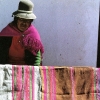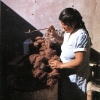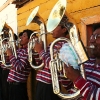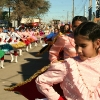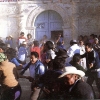Historia
The history of the Aymara people unfolded on the shores of Lake Titicaca, in what is now Bolivia, continuing a tradition that came to the fore at the height of the Tiwanaku culture (500-1000CE). Before the fall of this pre-Hispanic culture, the Colla people, as they were then known, lived independently, organized into local domains called Señoríos, some of which exhibited great social complexity. Although they were incorporated into the Inka Empire around the year 1400, it was the Spanish conquest that dealt a serious blow to the social and economic structure of these domains. The impact of the conquest was particularly severe in 1534, the beginning of the period known as the Eradication of Idolatries, and from 1600 to 1650.
However, the arrival of Christianity did not bring about the complete disappearance of the Aymara cosmic vision. Instead, local inhabitants assimilated the beliefs of the conquistadors, broadening their outlook and incorporating changes into their cosmic, religious and political perspectives.
Between 1700 and 1850, the Aymara people living in the territory of modern-day Chile remained isolated. It was only following the War of the Pacific and the annexation of Tarapacá by Chile that they were brought into the country’s mainstream culture and economy in a marked process of westernization. Since 1950, urban centers and ports have become fundamental contexts of modernization and cultural change for the Aymara people, but also have hastened the abandonment of their ethnic identity. There are currently 48,501 Aymaras living in Chile, representing 7.01% of the country’s total indigenous population.

















